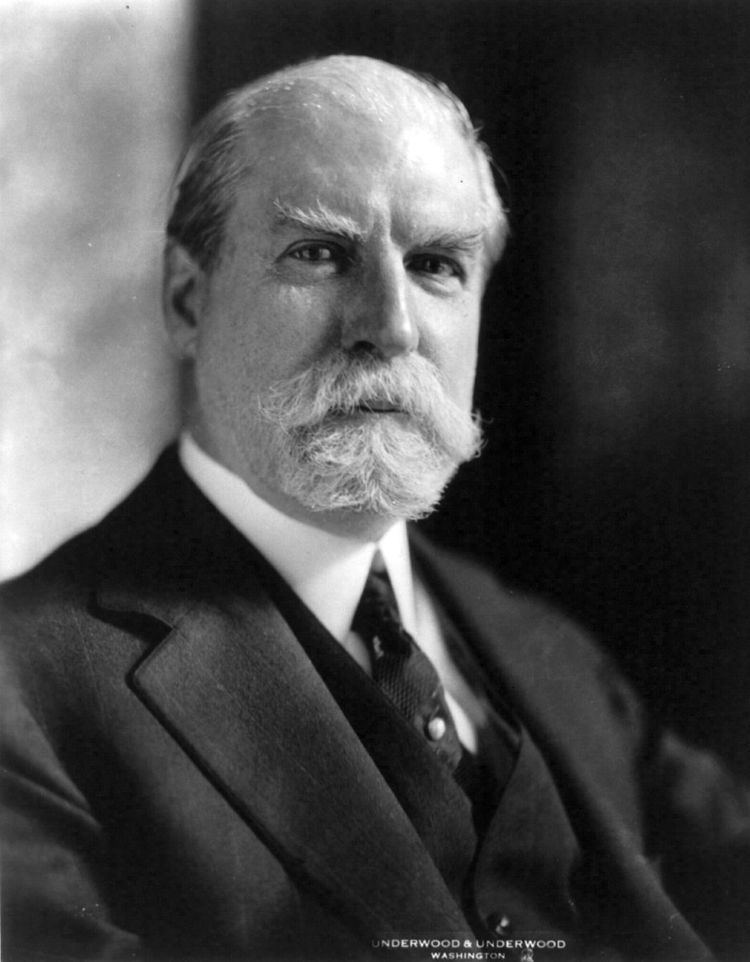Established 1930 Country United States | Dissolved 1941 No. of positions 9 | |
 | ||
Location | ||
The Hughes Court refers to the Supreme Court of the United States from 1930 to 1941, when Charles Evans Hughes served as Chief Justice of the United States. Hughes succeeded William Howard Taft as Chief Justice after the latter's retirement, and Hughes served as Chief Justice until his retirement, at which point Harlan Stone was nominated and confirmed as Hughes's replacement. Presiding over the country during the Great Depression, the New Deal, and the presidency of Franklin Roosevelt, the court struck down many of President Roosevelt's policies until 1937, when it began to uphold them.
Contents
Membership
The Hughes Court began in 1930, when Hughes was confirmed to replace William Howard Taft as Chief Justice. As president, Taft had appointed Hughes to the position of Associate Justice in 1910, and Hughes had remained on the Court until his resignation in 1916 to run for president. Associate Justice Edward Terry Sanford died less than a month after Hughes's confirmation as Chief Justice, and was succeeded by Justice Owen Roberts in May 1930, after the Senate rejected President Herbert Hoover's first nomination, John J. Parker. With the confirmation of Roberts, the Hughes Court consisted of Hughes, Roberts, and seven former members of the Taft Court: Oliver Wendell Holmes, Jr., Willis Van Devanter, James Clark McReynolds, Louis Brandeis, George Sutherland, Pierce Butler, and Harlan F. Stone. Holmes retired in 1932 and was succeeded by Benjamin N. Cardozo; like Roberts and Hughes, Cardozo was appointed by President Hoover. Frustrated by several defeats in the court system, President Franklin Roosevelt attempted to expand the size of the Supreme Court with the Judicial Procedures Reform Bill of 1937, but his effort was defeated in Congress. However, Roosevelt made his first appointment to the court in 1937, replacing the retiring Van Devanter with Hugo Black. After Sutherland, Cardozo, Butler, and Brandeis left the court, Roosevelt appointed four more members: Stanley Forman Reed in 1938, Felix Frankfurter and William O. Douglas in 1939, and Frank Murphy in 1940. McReynolds retired shortly before the end of the Hughes Court, but McReynolds's replacement was not confirmed until the start of the Stone Court. The Hughes Court ended with Hughes's retirement in 1941, and Roosevelt successfully nominated Associate Justice Stone to succeed Hughes.
Chief Justice Associate Justice
Rulings of the Court
The Hughes Court issued several notable rulings touching on many aspects of American life. Landmark cases of the Hughes Court include:
Judicial philosophy
The Hughes Court has been called a time of "constitutional revolution" in which the court turned away from the Lochner era of striking down government regulations. The Hughes Court was divided into three major blocs of justices. The Four Horsemen consisting of Justices Sutherland, Butler, McReynolds, and Van Devanter were a group of conservative justices who often voted to strike down New Deal programs, while a liberal bloc known as the Three Musketeers, consisting of Justices Brandeis, Stone, and Cardozo, often upheld New Deal programs. Chief Justice Hughes and Justice Roberts were nicknamed the "roving justices" and voted with either bloc depending on the case. Roberts's decision in 1937 to vote to uphold Washington's minimum wage law has been described as the switch in time that saved nine in that it represented a new dominance of the liberal faction of the court (as well as a defeat to Roosevelt's plan to expand the size of the court). However, some scholars, such as Barry Cushman, have rejected this conventional wisdom as overly simplistic in emphasizing the justices's roles as political actors. Cushman argues that many of the New Deal acts were struck down because they were not written with proper consideration for constitutional issues, and that the Roosevelt Justice Department under Homer Cummings failed to adequately defend the laws in court. Regardless of the reasons for the change, the Supreme Court did not strike down another New Deal law after 1936. The subsequent retirements or deaths of three of the Four Horsemen (and Justice Cardozo) gave Roosevelt the opportunity to appoint liberal Justices who ruled more favorably on his agenda.
